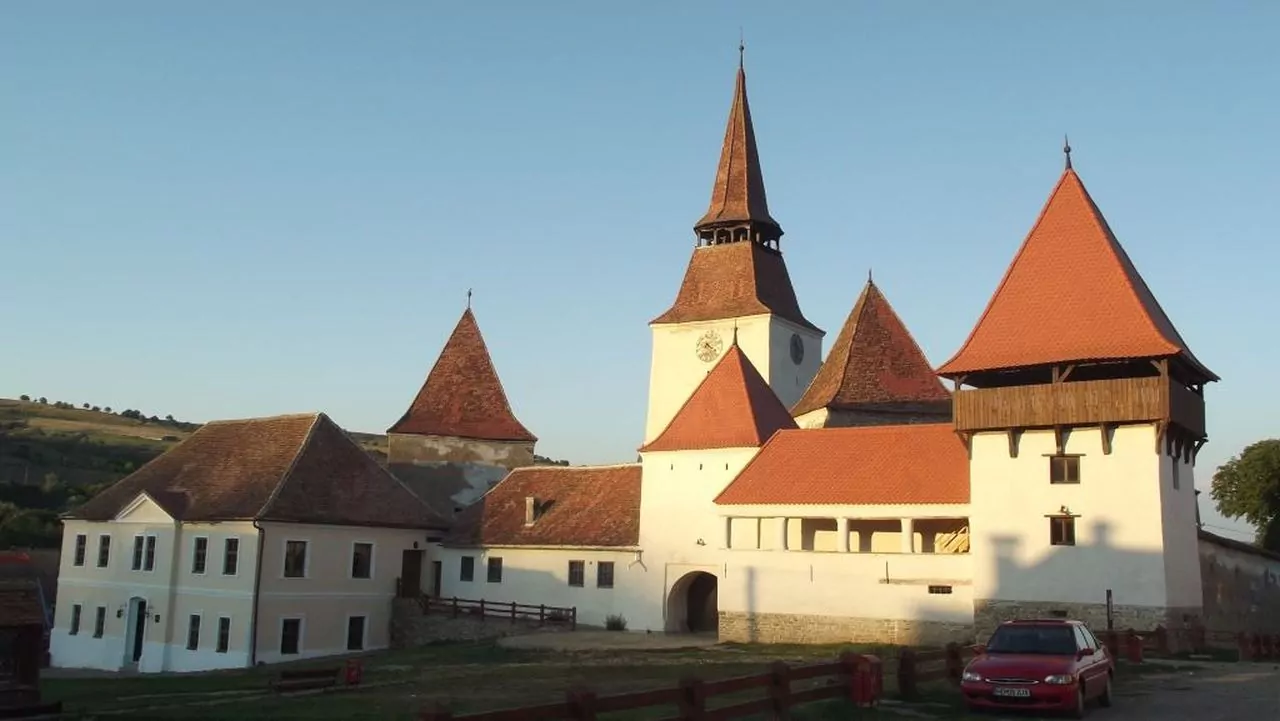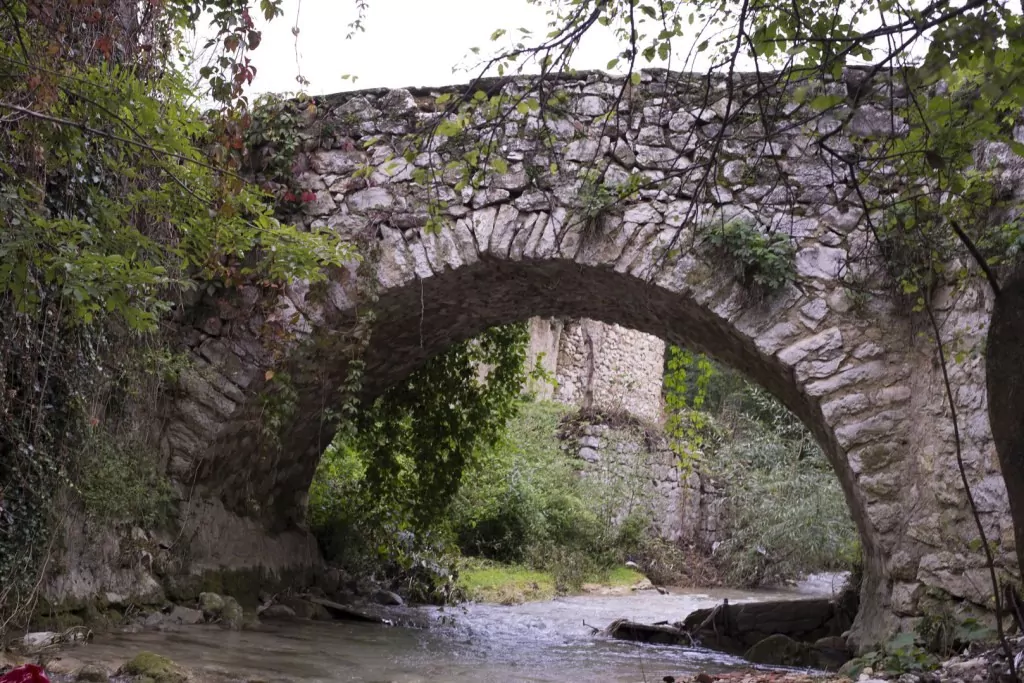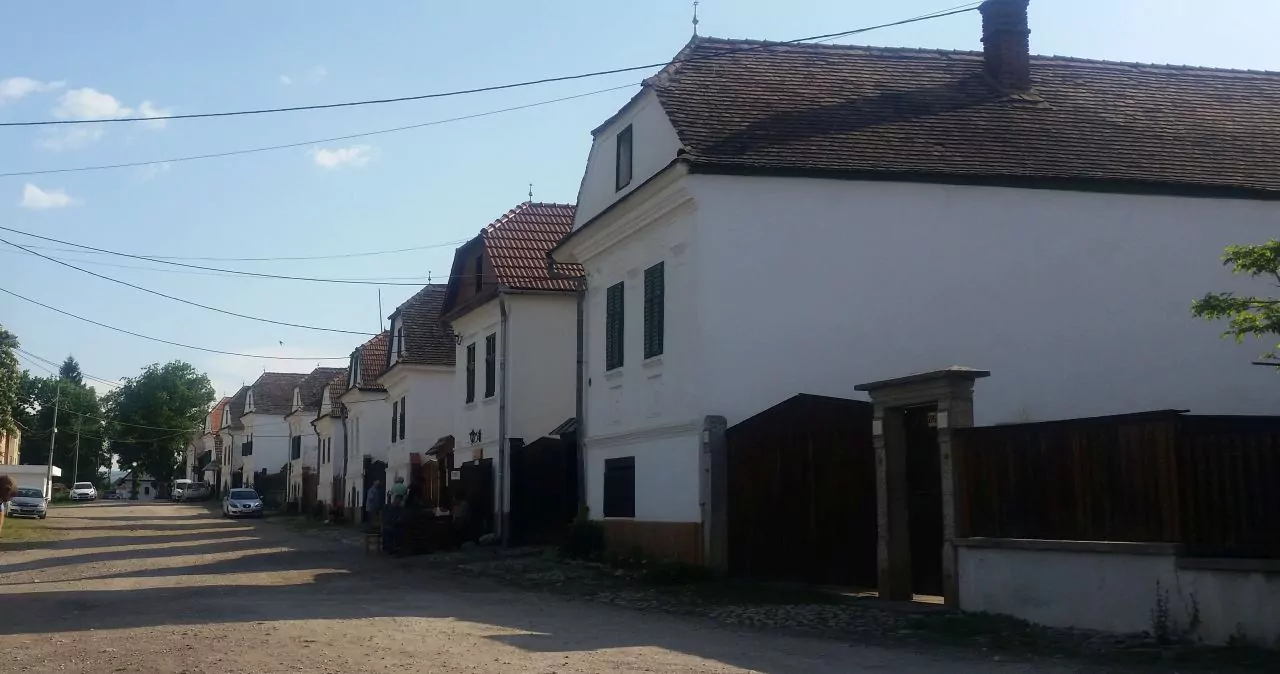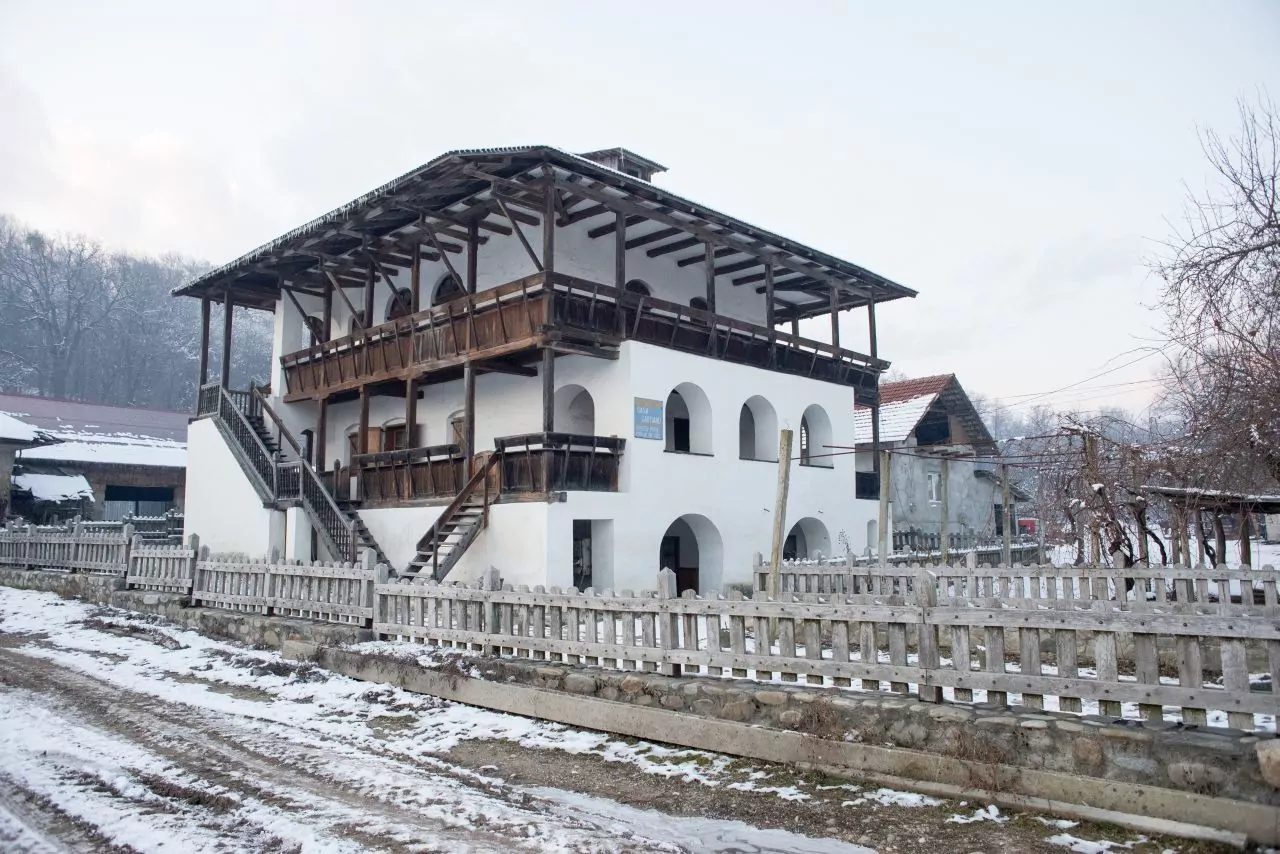Are you tired of the traffic, car honkings, crowded streets, exhaust gases, concrete, and asphalt? The June 1st mini-vacation can be a great opportunity for a break from the hustle and bustle out in the countryside. Economedia.ro has put together a selection of picturesque and less-known rural destinations in Romania.
Urmărește mai jos producțiile video ale Economedia:
- articolul continuă mai jos -
Alternative for Saxon villages
Saxon villages with fortified churches in Transylvania have become a fashionable tourist destination in recent years, especially after the intense media coverage of the one in Viscri, which has become overcrowded by too many tourists. Likewise, Biertan, Prejmer, or Saschiz are intensely visited. Thus, if you want to enjoy the authenticity of the cultural landscape of the Saxon villages, but without too many tourists around, you can try other destinations on this theme, such as Archita, Malancrav, or Hosman.
Archita is a village literally lost in a fairytale landscape, on the northern border of Saxon Transylvania, towards the Szeklerland. The village can only be reached on unpaved roads, a really bad one at that – from Darjiu, Harghita, and a better one – from Mureni, Mures county. In the center of the village, one can find the fortified church, perhaps one of the most photo-worthy such monuments in Transylvania, a truly remarkable scene. The whole church in Archita impresses with its harmony of proportions and the strength of the two rows of walls and its seven towers. Hermann Fabini in his work “The Universe of Church Cities in Transylvania” considers it among the most important. To enter the church, ask for the key at the store next to it.

Malancrav is another Saxon village that can only be reached via an unpaved road, from the center of the commune Laslea (Sibiu). Malancrav, or Malmkrog in German, is a paradox: although it is located in the heart of Romania, it is relatively far from almost anything. Isolation from the rest of the world helped Malancrav to remain a time capsule. The praiseworthy work of some international NGOs, such as the Mihai Eminescu Trust (MET) or the World Wildlife Fund, helped revitalize the village after the 1990s and to save its remarkable architectural heritage. Unlike the rest of the Saxon villages in Transylvania, in Malancrav the German community did not emigrate completely. About 130 people attend the church service each Sunday. On the streets, you can still hear German spoken in the local dialect. The village church is extremely valuable, because it preserves a 20-meter fresco, the largest in Gothic style in Transylvania, according to the Mihai Eminescu Trust. Also in Malancrav is the beautiful Apafi mansion, restored by the book, which is now used as accommodation or for events.

Hosman is another jewel of the Saxon villages, more easily accessible, located on the Hartibaciului Valley, also in Sibiu County. Many travelers who have beaten Romania far and wide say that the late spring landscape, dominated by the Transylvanian Alps (Făgăraș Mountains), still covered with snow, which outlines the massive but elegant tower of the church is one of the most picturesque images you can admire in our country. The church in Hosman is also of great artistic value; recently restored, the Romanesque portal presents strikingly vivid colors. The perfect photo can be taken from the bridge over Hartibaciu at the entrance to the locality, with the church profiled in the background by the snow-capped mountains.

The figs from Ilidia
Just as the Saxon villages have their star localities like Viscri, Biertan, or Saschiz, so too could the villages near the Banat mountains, and Ilidia, at the foot of the Anina mountains, could easily be one of them.

The local architecture is of Swabian inspiration, with houses lined up on the street, one after the other. The streets are bordered by trees lined up like chestnut trees, and behind them are the houses, with thick walls and solid gates. Figs grow in the hidden yards behind the houses because the sun here is strong enough to ripen their fruit.
In the village, a visit to the church is a must; specific to the Banat villages – the church is Orthodox, but with Baroque architecture and, in addition, superbly painted by Ion Zaicu. Then there are the stone bridges. White, chipped from time, of vintage elegance, they arch over the river that passes through the village. There are three major stone bridges and extremely photo-worthy. There are also still functional water mills, and nearby are the ruins of a medieval tower.
The cleanliness of the main street, the aligned trees, the symmetrical houses chained one after the other, the baroque church, and the white stone bridges give Ilidia, but also other surrounding villages, such as the nearby Potoc, a rich air. In Ilidia accommodation is available, and the village can be used as a starting point for exploring the Cheile Nerei – Beușnița National Park, located in the immediate vicinity.
The art treasure of Topalu
15 kilometers from Hârşova, on the bank of the Danube, is Topalu, a village not far to the east, which can be reached on a secondary artery, of the old national road to the sea, before the building of the A2 highway. Now cars are rare on the road, and tourists heading to Topalu are even rarer.

What can one see in Topalu? Well, here is one of the most valuable collections of Romanian fine arts. It is a “best of” of the Romanian masters from the end of the 19th century and the beginning of the 20th century. All the great painters are here: Grigorescu, Luchian, Tonitza, Pallady, Petraşcu, Steriadi, Ressu, Iser, Ciucurencu and others, but also works by sculptors such as Oscar Han, Dimitrie Paciurea, Cornel Medrea or Ion Jalea.
The house that houses the impressive exhibition is located in the center of the town and is the birthplace of doctor Gheorghe Vintilă (1898-1978), who in 1960 donated his personal collection to the commune in the condition that a museum would be set up and bear the names of his parents, Dinu and Sevasta Vintilă, and be housed in his birthplace.
From the outside, the medium-sized house does not seem large enough to house the 228 donated works of art. But it has been enlarged without affecting its exterior image so that it has 12 exhibition halls. The halls house dozens of masterpieces, which delight the eye even of the less educated visitors. In almost every hall there are snippets from the realities of Dobrogea of 100 years ago, signed by members of the Balchik group (Tonitza, Şirato and Dimitrescu), but also by others… landscapes and portraits before industrialization radically changed the world.
The lush green of Ciocanesti and Carlibaba
When descending from Maramureș to Bucovina, through the Prislop mountain pass – perhaps one of the most beautiful passes from one part of the Romanian Carpathians to the other – two villages that look like from a fairy tale await you: Carlibaba and Ciocanesti. The gentle slopes of Carlibaba are dotted with scattered houses, where the wood has been used to the full, surrounded by rectangular plots of land, bordered by wooden fences. Looking from the main road, it is as if one was passing through the middle of a chessboard, on which the houses and the haystacks are the pieces.
There are several guesthouses in the area where you can stay, and the locals will be happy to tell you the stories of Carlibaba. Two steps from the village is Ciocănesti, a locality where the houses are decorated like Bucovina easter eggs, a village with the status of a village museum.
Rimetea
It is difficult to say what is more picturesque at Rimetea (Torockó), in the Apuseni mountains. First of all, it is the location, in a bucolic depression of the Trascău mountains, dominated by a steep massif – Piatra Secuiului -, which seems to hang from the sun. There is also the Coltesti Fortress, one of the most romantic ruins in Transylvania, located not far from the village. Then there is the village itself, where everything is authentic. There are no advertisement billboards to aggress the landscape. The white houses are outlined by the green carpentry of the windows, from which geraniums and petunias flow. The small restaurants in the central square have no double glazing windows or terraces with plastic furniture.

Then there is the ethnic-geographical uniqueness of the place – a community of Unitarian Hungarians, surrounded by a mass of Orthodox motives, hence the bilingualism of the locality. And To all this add the industrial traditions in the area; in the glory days before the appearance of the steel industry, Rimetea and the neighboring Coltesti (Torockószentgyörgy) formed the most important iron processing center in Transylvania. The story of these times is told by the small museum in the center of Rimeta.
All in all, Rimetea is worth seeing and revisiting. It is an example of a community that does not want to forget everything that makes it different from the rest and that has managed to highlight its own identity so well that in 1999 it received the recognition of the whole of Europe by receiving te “This is the Europa Nostra” Medal, which was awarded for the first time in Romania for the 138 houses built in the 19th century, which are flawlessly restored.
The cula (from Turkish kule “tower, turret”) villages in Oltenia
In Oltenia, the villages with cula form a tourist archipelago waiting to be discovered by the crafty traveler. Apart from the well-known Greceanu cula, from Maldaresti, other fortified houses can also be visited in Cartiu, Bujoreni, Brosteni, or Curtisoara. The Cule still vibrates with lively stories, with the smell of blood, romance, and gunpowder, which happened only a few generations ago.

Built in an era closer to us than the fortresses and castles of Moldova and Transylvania or the Saxon fortified churches, the culas still live through their stories, which are now told by great-grandchildren to those who lived them. The Cula from Brosteni is as impressive in size as the one in Maldarești, and the house-cula in Cartiu, with wooden exterior balconies, is a true queen of beauty, while Cula Tatarescu from Curtisoara stands out by interior design made to resonate with the tastes of the high society in early twentieth century Bucharest.
Translated from Romanian by Service For Life S.R.L.






























